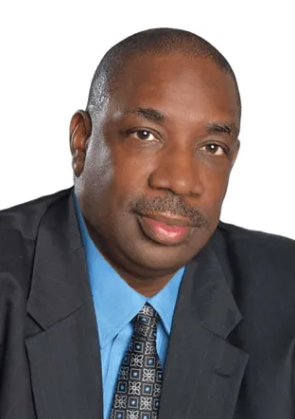Home > News > The Power of Music, Part 3: When Talk Therapy is Not Enough: Music as Therapy in Substance Use Disorders Treatment and Recovery
In part 1 and part 2 of the Power of Music series, we shared our observations and experiences of how music affects the emotions and behaviors of clients with substance use disorders and adolescents who might be at risk of substance use. We discussed how music can trigger substance use, yet, when used consciously as a tool, it can also be a catalyst for emotional well-being. This article explores some of the neurobiological effects of music and highlights a few approaches you can try in using music for treatment and recovery.
Research has established substance use disorder as a chronic brain disease. Research also confirms that music has a profound effect on brain chemistry, producing many of the same brain changes as substance use (Salimpoor, 2011).
For example, opiate use triggers the brain to release endorphins. Some genres of music engage the brain’s reward system and release dopamine, a “feel good” neurotransmitter that can serve as a healthy naturally-induced high.
According to Alex Damon, TEDx speaker and music and brain expert, listening to certain types of music improves regulation of the biological stress system and expedites recovery when we experience stress. This function reduces the stress hormone cortisol. Music’s impact on the biological stress system is significant because stress is a leading cause of relapse.
Singing also has an impact on the brain. In her TEDx Talk, Tania de long AM mentions a recent study that found group singing lessons enhance the release of oxytocin, a neurochemical associated with pleasure, love, and bonding. This is an important factor regarding the neurobiology of the brain, as neuroscientist Markus Heilig states, “social epidemiology has established a strong link between poor social integration and behaviors that result in alcohol and [substance use].”
Using certain genres of music in substance use disorder treatment and recovery offers several additional benefits. Music, as a form of therapy, has been found to:
Now that we have discussed some of the positive neurobiological impacts of music upon the brain, here are seven ways music can be used therapeutically in addiction treatment and recovery:
This article highlights ways counselors can use music therapeutically as a tool in substance use disorder treatment and recovery. Working one-on-one with your client using these techniques could make a difference in client outcomes. A next-level approach could involve hiring a music or experiential therapist to strengthen your program’s ability to incorporate music, art, movement, and other approaches to help clients seeking recovery. Taking this next-level approach could help clients with their recovery. Whether your clients work with you or with a music therapist, they can experience the positive power of music in treatment and recovery.
Read the first two parts of this series by Mark Sanders and Kisha Freed:

|

|
|||
Kisha Freed |
Mark Sanders, LCSW, CADC |
|||
|
Kisha Freed is a Program Coordinator at the Behavioral Health Excellence Technical Assistance Center (BHE-TAC) at CHESS. She is also a Success Coach, a certified emotional intelligence assessor, a mindfulness meditation teacher in-training, and she provides coaching services for entrepreneurs, creatives, and career professionals. Kisha lives in Huntsville, AL with her two sons, Benjamin and Joseph, and her dearly beloved granddaughter, Jaana. |
Mark Sanders, LCSW, CADC, is the Great Lakes ATTC, MHTTC, and PTTC State Project Manager for Illinois. Mark is an international speaker, trainer, and behavioral health consultant whose work has reached thousands across the globe. He has received numerous awards recognizing his outstanding contributions to the fields of social work and substance use disorder treatment. Mark and his family live and work in Chicago, IL. |
Aldridge, D., & Fachner, J. (2010). Music therapy and addictions. Jessica Kingsley Publishers.
American Psychological Association. (2019). Mindfulness meditation: A research-proven way to reduce stress. https://www. apa. org./topics/mindfulness/meditation. https://www.apa.org/topics/mindfulness/meditation
Blum, K., Chen, T.J.H., Chen, A., Madigan, M., Downs, B.W., et al. (2009). Do dopaminergic gene polymorphisms affect mesolimbic reward activation of music listening response? Therapeutic impact on Reward Deficiency Syndrome (RDS). https://doi.org/10.1016/j.mehy.2009.10.008
Bourdaghs, S. & Silverman, M.J. (2020) A neurological rationale for music therapy to address social connectivity among individuals with substance use disorders. The Arts in Psychotherapy, Volume 70. https://doi.org/10.1016/j.aip.2020.101681.
Damon, A. (2018, August). Your brain is better on music. [Video] TEDx Ogden.
https://www.ted.com/talks/alex_doman_your_brain_is_better_on_music
de Jong AM, T. (2013, April). How Singing Together Changes the Brain. [Video] TEDx Melbourne.
https://www.tedxmelbourne.com/talks/how-singing-together-changes-the-brain
Ghetti, C., Chen, X. J., Fachner, J., & Gold, C. (2017). Music therapy for people with substance use disorders. The Cochrane Database of Systematic Reviews, 2017(3), CD012576. https://doi.org/10.1002/14651858.CD012576
Goldberg, S. B., Tucker, R. P., Greene, P. A., Davidson, R. J., Wampold, B. E., Kearney, D. J., & Simpson, T. L. (2018). Mindfulness-based interventions for psychiatric disorders: A systematic review and meta-analysis. Clinical psychology review, 59, 52–60. https://doi.org/10.1016/j.cpr.2017.10.011
Heilig, M., Epstein, D., Nader, M. et al. Time to connect: bringing social context into addiction neuroscience. Nat Rev Neurosci 17, 592–599 (2016). https://doi.org/10.1038/nrn.2016.67
Keeler, J.R., Roth, E.A., Neuser, B. L., Spitsbergen, J. M., Daniel J. M. Waters, D.J.M. and Vianney, J. (2015). The neurochemistry and social flow of singing: bonding and oxytocin. Frontiers in Human Neuroscience. https://doi.org/10.3389/fnhum.2015.00518/full
Kircanski, K., Lieberman, M. D., & Craske, M. G. (2012). Feelings into words: contributions of language to exposure therapy. Psychological science, 23(10), 1086–1091. https://doi.org/10.1177/0956797612443830
Salimpoor, V. N., Benovoy, M., Larcher, K., Dagher, A., & Zatorre, R. J. (2011). Anatomically distinct dopamine release during anticipation and experience of peak emotion to music. Nature neuroscience, 14(2), 257-262. https://doi.org/10.1038/nn.2726
Volkow, N. D., Michaelides, M., & Baler, R. (2019). The Neuroscience of Drug Reward and Addiction. Physiological reviews, 99(4), 2115–2140. https://doi.org/10.1152/physrev.00014.2018